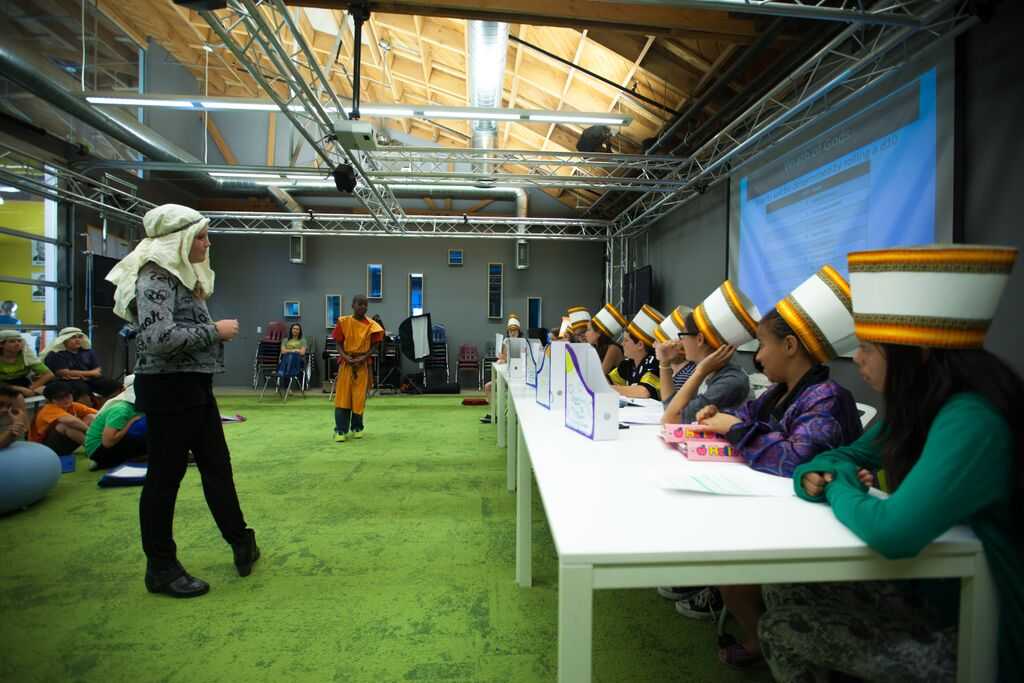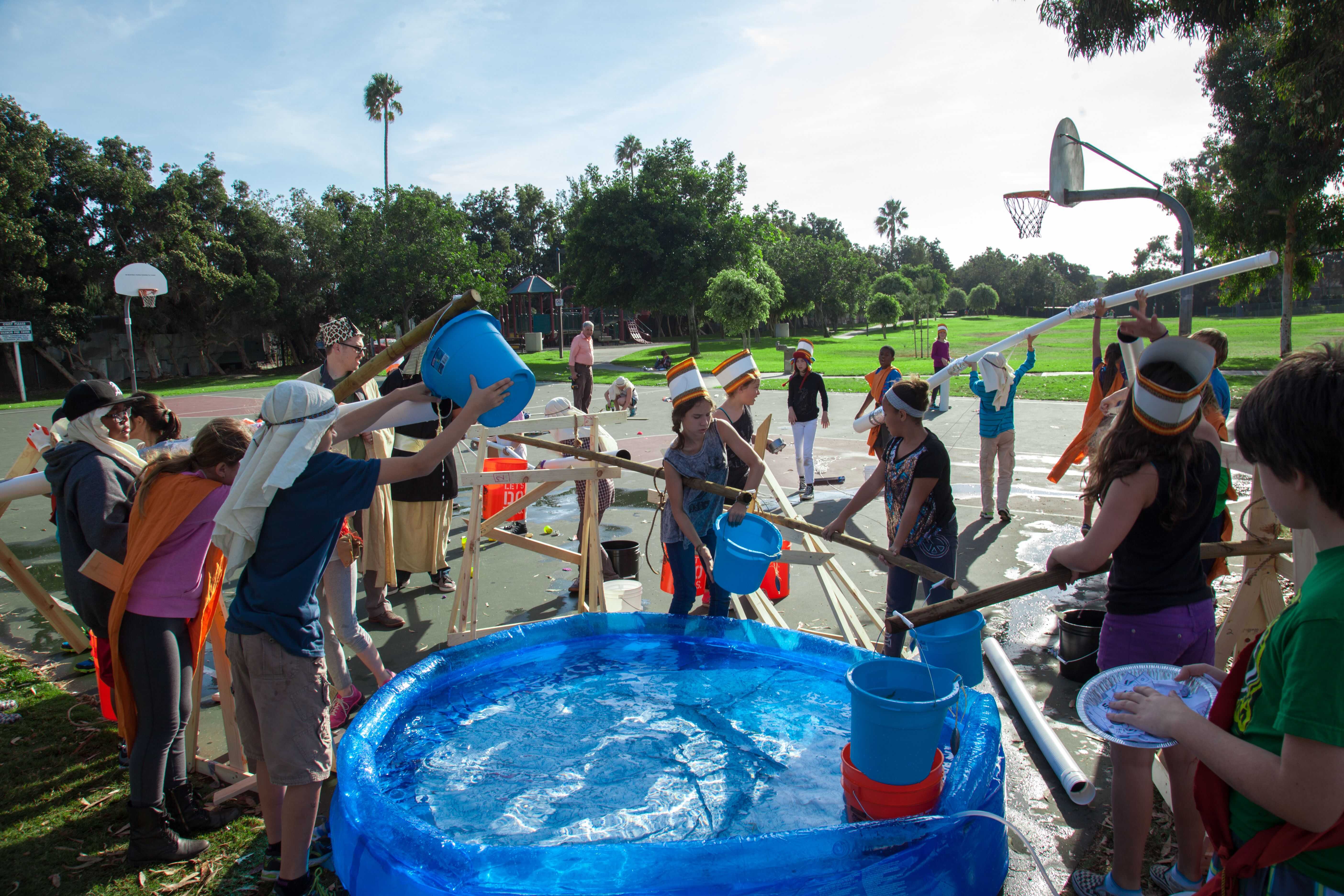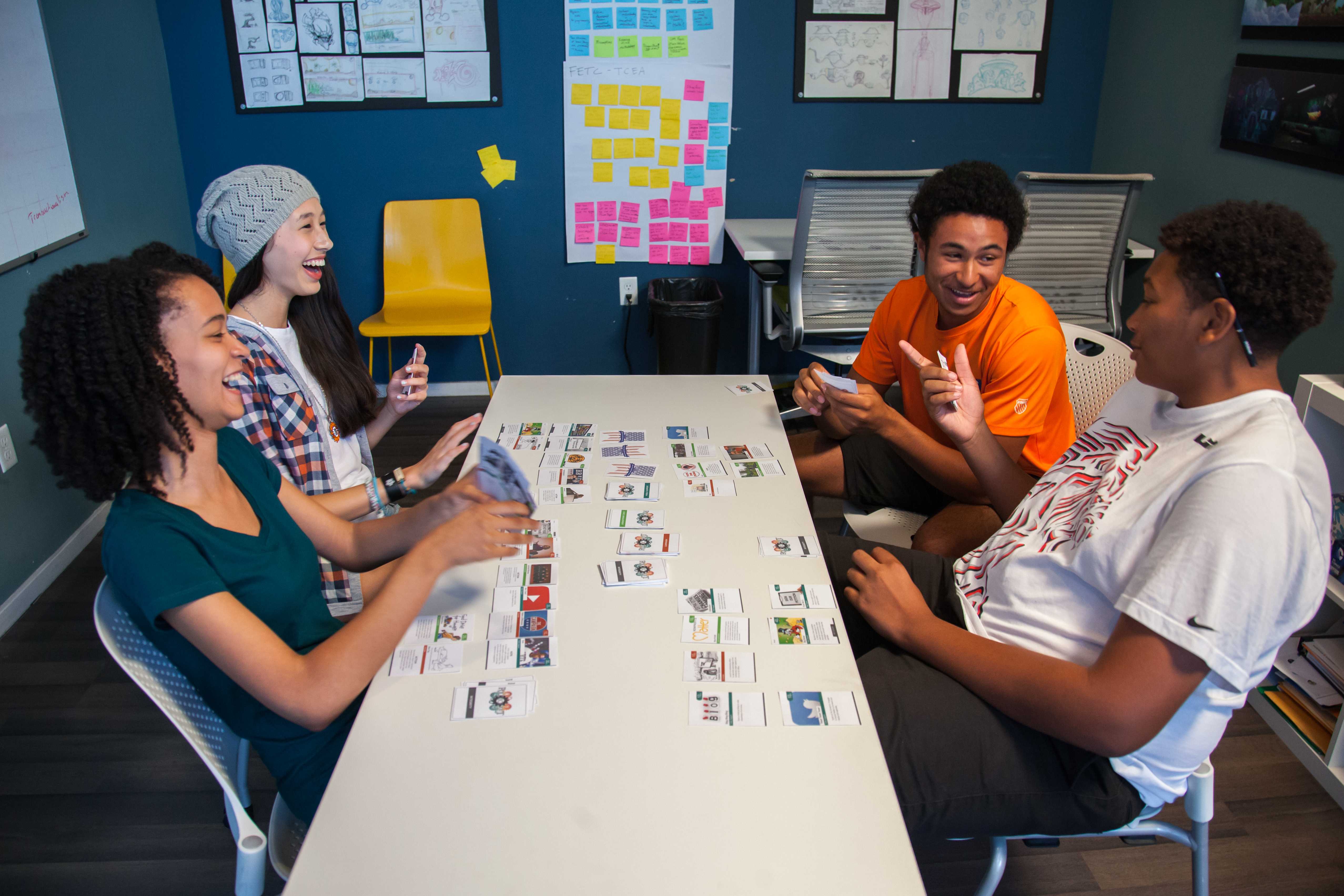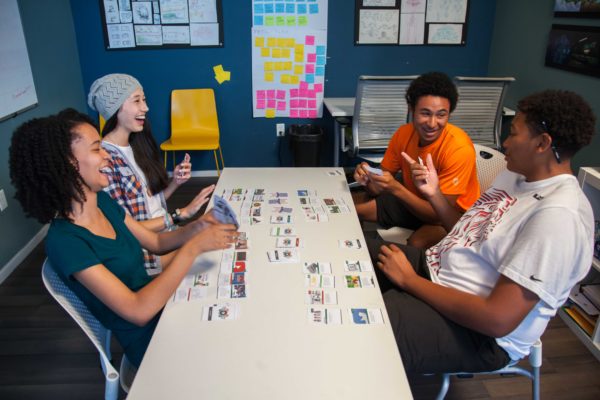Role-play enhances engagement and subject matter mastery. It’s also a lot of fun
 Students learning about the code of Hammurabi by acting as a council trusted with applying it
Students learning about the code of Hammurabi by acting as a council trusted with applying it
Maybe you’ve seen them interacting at Comic Con in fantastic costumes or reenacting decisive Civil War battles down to the smallest detail. Whether you realize it or not, you’re probably more familiar with role-playing than you realize. In education, role-play-as-learning is a unique experience which enhances student engagement, social skills, interest, and mastery of subject matter. It’s an approach that can have some major benefits for students.
At its core, role-play involves spontaneous, co-creative, contextualized, personally involved learning, and one of the best ways to introduce the concept to the classroom is though LARPs. Short for Live Action Role-play, LARPs are one part acting, one part historical immersion/interaction, and one part systematic modeling. It conceptualizes major concepts interwoven within human narratives that inspire students to enjoy and retain their knowledge within their experience. It leverages emotion as a mechanism for students to personalize key knowledge, processes, and concepts. And it involves embodiment and situational modeling, guiding students to not only learn the material but to experience it in context.
For educators, LARPing and narrative card games, two role-play types that our organization, GameDesk, has explored, can each offer teachers insight into role-play as an experiential learning tool and approach.
 Learning engineering techniques and history concurrently as students build their own shaduf
Learning engineering techniques and history concurrently as students build their own shaduf
First, let’s look at LARPs. In GameDesk’s ‘Time-Larp’ curriculums, students role-play through historical council hearings, agricultural trade, war, and commerce, while building 21st century skills along the way—such as collaboration, politics, and negotiation. In our week long Mesopotamia module for example, students and teachers assume the roles of fictional characters within the context of ancient Mesopotamia during the reign of Hammurabi (1779 BC-1715 BC). Students role-played various classes that existed during that time (merchants, governors, astrologers, and priests) and gained a deeper understanding of social norms and practices of the culture through interacting with one another, while in character, to fulfill in-game objectives.
Next page: Card games that engage every student
 Running their own campaigns in Politicraft to learn about their own involvement in the political system
Running their own campaigns in Politicraft to learn about their own involvement in the political system
In these role-play experiences teachers would act as facilitators of the experience, responsible for establishing the overall narrative, introducing each activity, maintaining competitive balance, and advising students on their character-driven objectives. Here the teachers are directors of an interactive play of ideas and concepts and experiences. They play the role the conductor of the learning experience.
Likewise, narrative card games are an immediate immersive social interaction. They are intrinsically inclusive. In order for the experience to happen, everyone must play. In the case of our Politicraft card game, the game becomes a personal civic engagement narrative so as each player is strategizing their civic actions, they are given opportunity to express it, articulate it, and personalize it. Students pick an issue they care about or that is assigned to them, and they use the cards in the deck to tell that story.
In the game you play to build a civic role around an issue and play actively with an emerging personal narrative. The decks are labeled: Public Support, Campaign, Civic Involvement, and Integrity. The Public Support deck is made up of different ways to get attention to an issue, like start a blog, tweet at the Governor, make a YouTube video, or befriend a city councilman. The Campaign deck is made up of different ways to participate in the election process, such as volunteering on a campaign and running for local, state, and national government. The Civic Involvement deck is about affecting policy and working in the community. Integrity works as an in-game currency. You must possess a certain amount of integrity cards to pursue certain actions. The win-scenario of Politicraft is the person with the amount of social influence points at the end of the game.
In this environment we are creating a playful collaborative and supportive environment to model behaviors, ideas, concepts and processes and through the gameplay of others see a pathway to their involvement and their way of relating to the world. Let’s take one of our younger participants in our Politicraft card experience, who we’ll call Sam. Coming into the game, Sam really didn’t articulate a large knowledge of social issues, and you could tell he was really intimidated by the older students at the table. As game-play progressed, even though he had trouble, he modeled his issue by grabbing onto two of the other players’ issues. Soon his shyness started to subside as he began to adopt some of their storytelling styles. In this environment, play creates a human way to model what we seek to emulate within ourselves.
A card game is “all-in” interaction. In a normal learning situation, all the students are facing forward and there’s the one student that raises their hand. In the group discussion there always the one student who has the most to say, who’s trying to beat everyone else to the punch. Maybe they are the smartest. Maybe they just learn better in this traditional environment.
In a card game, however, everyone has to participate. Everyone has to take their turn. And in the case of a role-played storytelling card game, everyone gets to tell their story.
Both of these role-playing formats offer students an innovative look into these concepts, these systems, and the physiological spaces that aren’t so easily evident on the textbook page. They immerse and envelop us in a human experience where one doesn’t just read it, they become it, and by virtue of doing so, they have the opportunity to understand it.
Lucien Vattel is CEO of GameDesk. Blaine Vedros is lead game designer behind Politicraft.
This article is the first in a series on the Jedi Toolkit for teaching in the 21st century, which will explore different experiential categories and technology types to facilitating interactive high-engagement learning.
- TC- What student choice and agency actually looks like - November 15, 2016
- What student choice and agency actually looks like - November 14, 2016
- App of the Week: Science sensor meets your smartphone - November 14, 2016


